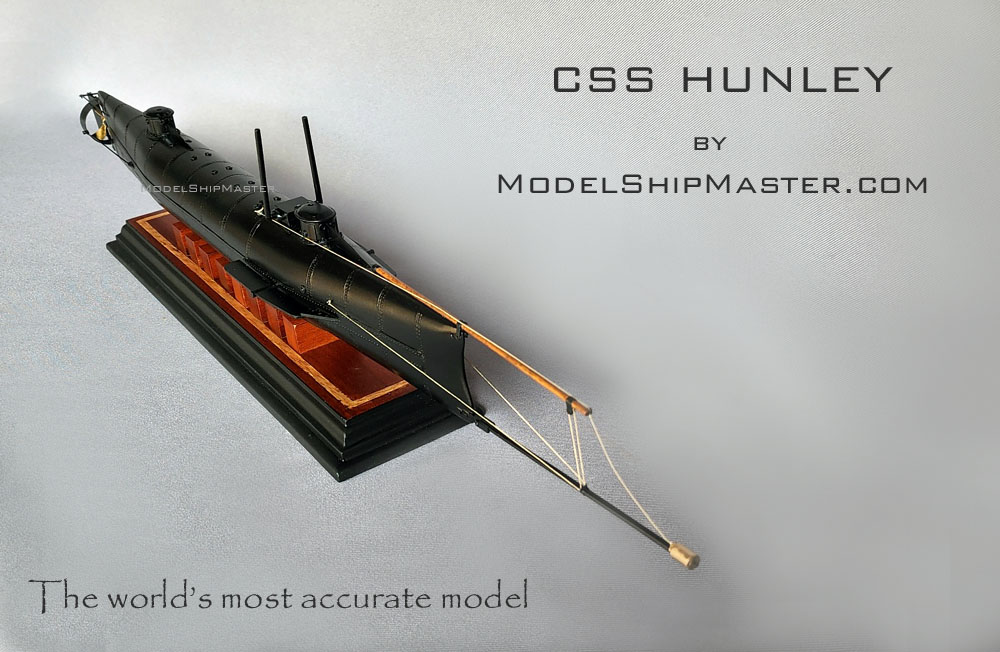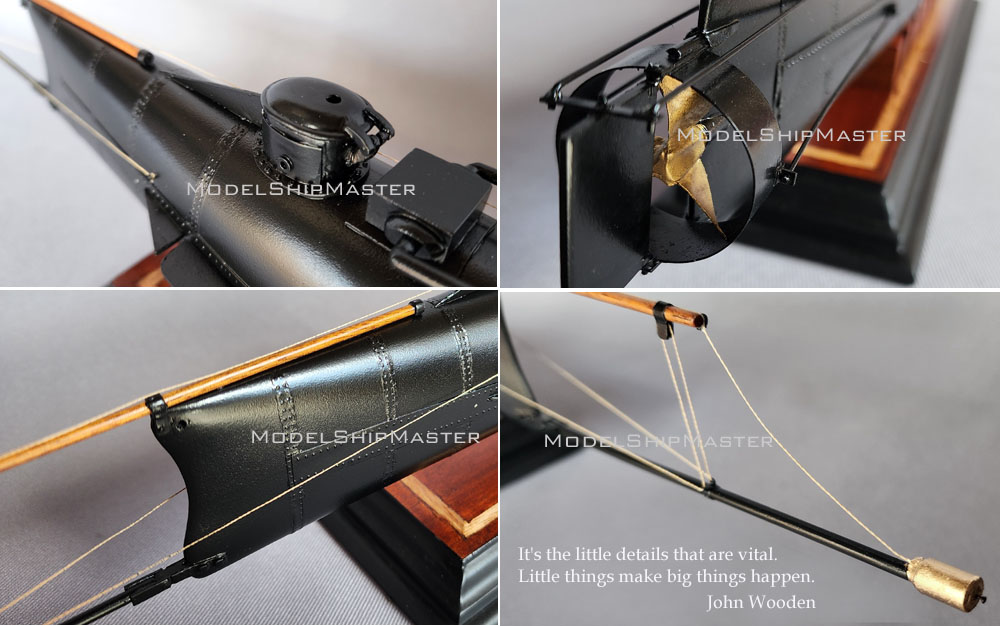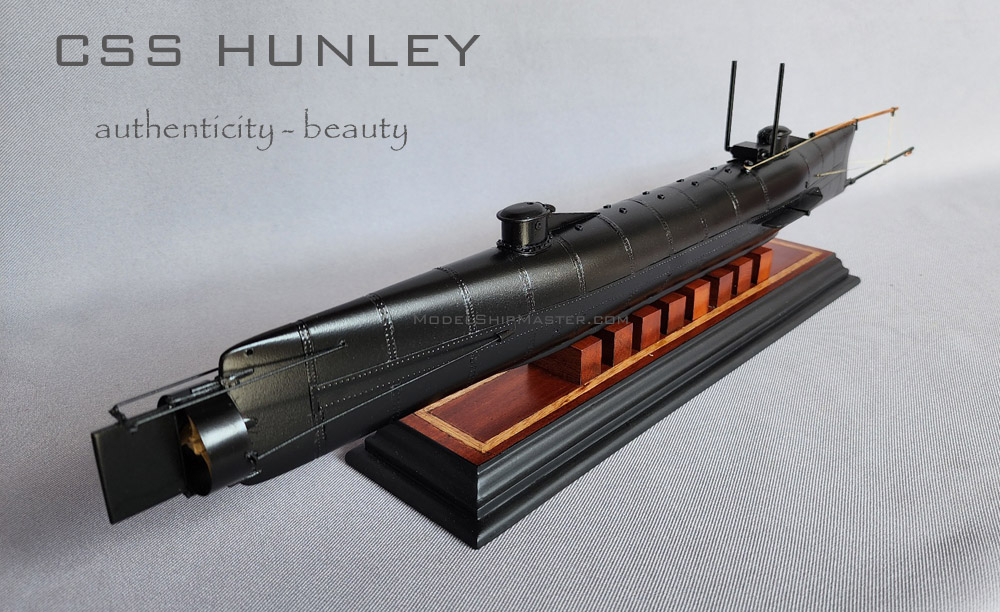|
CSS HUNLEY
model
After analyzing all the Hunley
submarine kits and models that have been
produced worldwide, we
felt that none of them reflected well the real submarine. So we
introduced this accurate model in 2024 for the serious collectors and museums.

Hunley was a submarine
of the Confederate States of America that fought in the
American Civil War. On February 17, 1864,
she attacked and sank the USS Housatonic. For
this account the Hunley was the first submarine to
ever sink a warship.
The submarine Hunley was named for her
inventor, Horace Lawson Hunley. A crew of eight turned the hand
cranked propeller and steered the submarine. There were
ballast tanks at each end of the boat, flooded with
valves or pumped dry by hand pumps. There were weights
bolted to the underside, that could be released from
inside the sub in case of an emergency.
In the configuration used
in the attack on Housatonic, Hunley's torpedo had no barbs, and was designed
to explode on contact as it was pushed against an enemy
vessel. After Horace Hunley's accidental death, General
Beauregard ordered that the Hunley submarine should no longer
attack while submerged. An iron
pipe was then attached to her bow so the explosive charge would be
delivered sufficiently under water.

During the
Civil War, the Navy of the Confederate States were
heavily outgunned by the Union’s navy. Almost from the
outset of the war it was apparent that the South would
be unable to meet the Union’s fleet on equal grounds,
and development of asymmetrical means was encouraged
which resulted in a brief periods of rapid development
of underwater sneak submarines. Civilian engineers were
invited to submit proposals to the Confederate Navy and
promised financial rewards for successful designs.
Best known
of these Confederate sneak craft was the Hunley
submarine. She
was the last of three submarines built by a team of
engineers led by Mr James McClintock, and including an
engineer named Horace L Hunley.
The
Hunley submarine was located in 1995. She was raised in
2000. Examination in 2012 of recovered Hunley artifacts
suggests that the sub was as close as 20 ft to the
USS Housatonic when her deployed torpedo exploded,
which caused the submarine's own loss. The crew
positions indicated that the men had died at their
stations and were not trying to flee the sinking
submarine.
The
submarine Hunley
is now on permanent display in North Charleston, South
Carolina.

Our
primarily wood Hunley submarine model is the most accurate ever produced worldwide. It features: sharp bow, copper cylinder torpedo, wooden spar,
correct rudder mechanism, keel blocs that helped the Hunley stay upright and stable,
ect.
27" long x 5" tall x
3.5" wide $2,490  Shipping and insurance in
the contiguous USA included.
Other places: $300 flat rate. This
model is in stock and can be shipped within 5 business
days.
Shipping and insurance in
the contiguous USA included.
Other places: $300 flat rate. This
model is in stock and can be shipped within 5 business
days.
We also build larger
sizes. Email us for quote.
Learn more about the
Hunley
submarine here:
https://en.wikipedia.org/wiki/H._L._Hunley_(submarine)
|